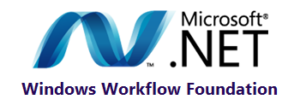 1. What is Windows Workflow Foundation (WF)?
1. What is Windows Workflow Foundation (WF)?
Windows Workflow Foundation (WF) is a technology that was first introduced in .NET Framework 3.0. WF consists of a programming model, a workflow runtime engine, workflow designer, a rules engine, and tools to quickly build workflow-based applications on Windows. WF facilitates the separation between the business process code and the actual implementation code.
2. What are the components of WF 4.0?
WF consists of several components that work together to create desired workflow. The components of WF are given as follows:
Workflows and activities
Base activity library
Custom activities
Host process
Activity data mode!
Runtime engine
Runtime services
3. What is a workflow?
A workflow is a collection of actions (called activities) that presents the model of a process. A workflow provides a way to describe the order of the execution of a long running process and relationships between different activities. Multiple instances of a workflow may be active at any given moment in an application.
4. What are the different types of workflow in WF?
In WF 4.0, the following two types of workflows are used:
Flowchart workflows – Helps you to create workflows using the common flowchart elements. In WF, the Flowchart activity is generally used to implement a non-sequential workflow, and occasionally it implements sequential workflows in case the FlowDecision nodes are not used. The Flowchart activity contains a collection of flow nodes, which inherit from the FlowNode class. The following types of nodes or elements can be a part of a flowchart:Procedural workflows – Helps you to create workflows using basic and sequential execution standards. In WF, procedural workflows use flow control constructs, such as While, Switch, ForEach, and If, to execute activities. These flow control constructs are similar to those found in procedural languages. Procedural workflows can also contain other flow control activities, such as Flowchart and Sequence.
FlowStep – Executes activities of a flowchart in a sequence.
FlowDecision – Shows the execution on the basis of a Boolean condition. It is similar to the If construct.
FlowSwitch – Shows the execution on the basis of an exclusive switch. It is similar to the Switch construct.
5. What are the four workflow principles?
According to Microsoft, there are four major principles that explain the behavior and working of workflows. Developers can use these principles while developing workflow-based applications. The four principles are as follows:
Workflows help in coordinating the work performed by people and software.
Workflows are long-running and stateful.
Workflows are based on extensible models.
Workflows remain transparent and dynamic throughout their lifecycle.
6. What is a base activity library?
The base activity library is a collection of activities used to create workflows.